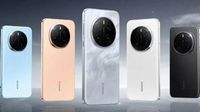Google has officially unveiled its latest mid-range smartphone, the Pixel 9a, and it promises to deliver a significant upgrade over its predecessors, particularly in battery life and artificial intelligence features. Priced starting from 41,000 rubles, the Pixel 9a will be available in early April 2025, pending confirmation of the exact release date.
The Pixel 9a measures 154.7 x 73.3 x 8.9 mm and weighs 185.9 grams, positioning it comfortably in the mid-range category, ideal for budget-conscious consumers who desire high-quality performance.
One of the standout features of the Pixel 9a is its impressive battery capacity of 5100 mAh, up from 4700 mAh in the Pixel 9. Google claims this will enable up to 30 hours of usage without needing a charge, a significant promise that places the Pixel 9a as a contender among similarly priced smartphones. The device supports 23 W wired and 7.5 W wireless charging, ensuring that users can quickly recharge when necessary.
On the display front, the Pixel 9a sports a 16 cm OLED screen with Actua technology, capable of dynamic refresh rates between 60-120 Hz and peak brightness levels reaching 2700 nits, protected by Gorilla Glass 3. This is similar in specifications to the flagship Pixel 9, although rumors suggest that Google's Pixel 9a may not have the same advanced materials used as found in its more expensive counterparts. However, it aims to deliver quality visuals and responsiveness, making it a solid option for media consumption.
Under the hood, the Pixel 9a is powered by Google's Tensor G4 processor, ensuring top-tier performance for tasks that leverage AI technologies. Running on Android 15, it promises 7 years of updates, extending its useful life considerably longer than many competitors on the market.
Camera-wise, the Pixel 9a is equipped with notable specs that include a 48 megapixel wide-angle lens with an aperture of F1.7, a 13 megapixel ultra-wide-angle lens with an aperture of F2.2, and a selfie camera with the same 13 megapixel resolution. With super-res capabilities extending zoom up to 8x, the phone is expected to provide high-quality photography despite its mid-range positioning.
Critics and tech enthusiasts have noted that despite Pixel smartphones being slightly hampered by the less powerful nature of Google's Tensor chips in pure processing speed, the unique capabilities of these processors, especially in image processing and AI functions, may compensate for this drawback in everyday use.
Despite a slight bump in price for the 256 GB version, which now sits at 49,600 rubles, the Pixel 9a promises excellent value for anyone looking for a balance between cost, performance, and features. As the mid-range smartphone market becomes increasingly competitive, the pricing strategy employed by Google positions the Pixel 9a attractively against similar offerings from other major brands.
The design of the Pixel 9a continues the aesthetic direction set by previous models in the series, featuring a metal frame with a plastic rear cover intended to mimic glass. However, there are subtle changes in the camera module that now appears horizontally rather than in the previous stacked configuration, enhancing its look while also making it slightly wobble when placed on a flat surface.
In terms of durability, the Pixel 9a boasts an IP67 rating, which provides some resistance to dust and water, although it is worth noting that this is less robust than the IP68 rating of the Pixel 9. This means the Pixel 9a can withstand splashes and brief submersion, adding to its usability in various environments.
As with its predecessors, the Pixel 9a will be available in four colors: Obsidian, Porcelain, Iris, and Peony, which add a touch of personalization for users.
Every indicator points to the fact that Google is continuing to refine its offerings in the smartphone market, aiming to attract consumers who might otherwise lean towards competitors due to price or performance concerns. As tech experts await further reviews post-release, the Pixel 9a stands ready to challenge the status quo with its compelling features and user-centric design.



